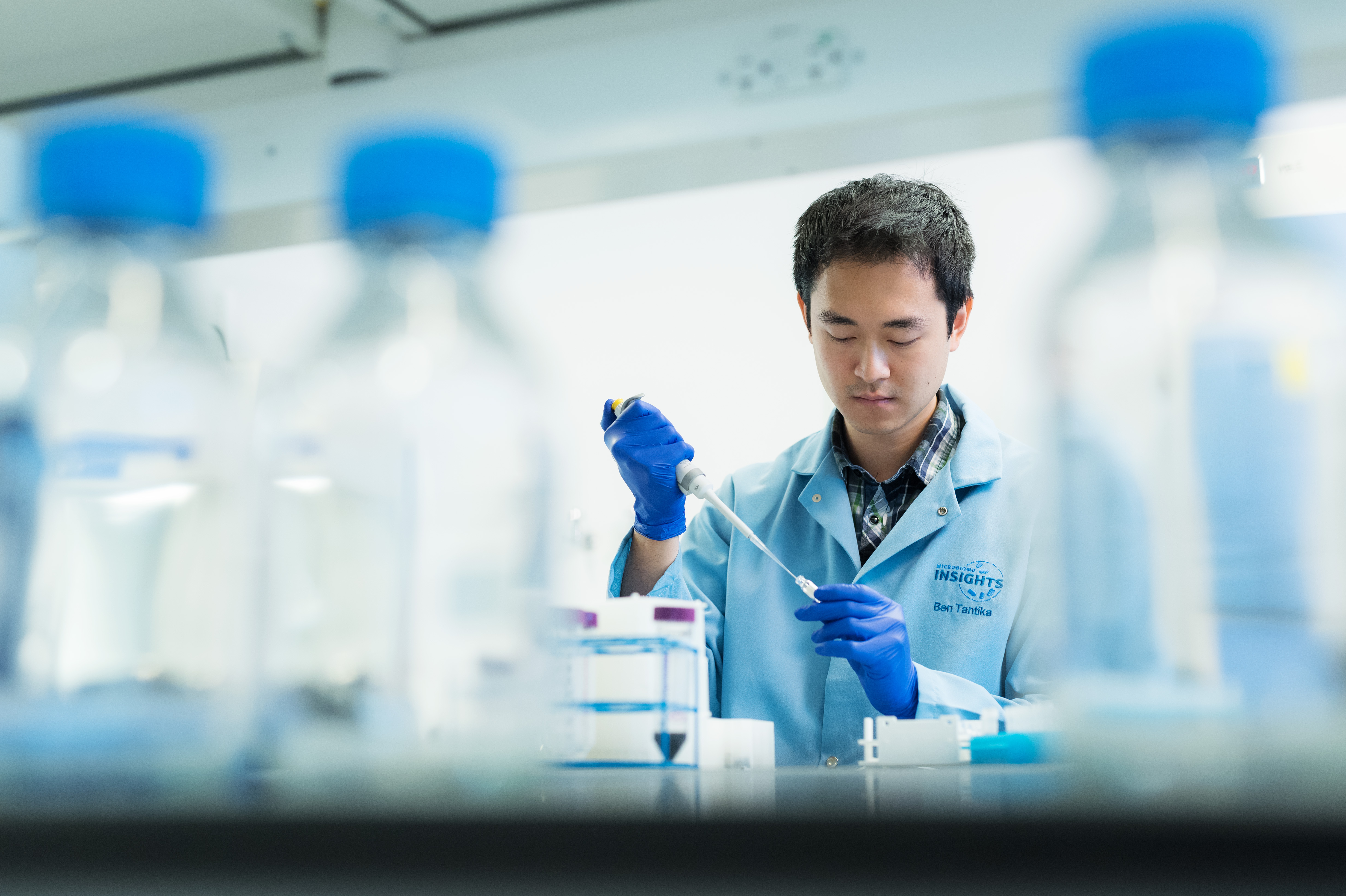
How to Incorporate Metatranscriptomics into your Microbiome Study
What we will review in this blog:
- What is metatranscriptomics?
- Principles of metatranscriptomic sequencing
- Conducting metatranscriptomics, step-by-step
- Strengths and Limitations
- Metatranscriptomics with Microbiome Insights
What is metatranscriptomics?
Metatranscriptomics involves analyzing the transcriptome, which refers to all RNA molecules, produced by the microorganisms found in a specific environment, such as the gut, water, or soil. By using high-throughput RNA sequencing, researchers can gain a better understanding of gene expression patterns, metabolic activities, and the functional roles of various microbial species in the ecosystem. Although the main focus of metatranscriptomics is on messenger RNA analysis, it is possible to also analyze rRNA genes to target active communities within the samples.
Principles of metatranscriptomic sequencing
The principles of metatranscriptomics are based on the assumption that RNA transcripts are a reflection of active gene expression. Researchers can determine the functional genes that are being expressed by microbes and learn more about the metabolic and cellular processes taking place in a microbial community by analysing the transcriptome. Metatranscriptomics also offers a dynamic perspective of microbial community functions by revealing variations in gene expression over time or in response to environmental stressors.
Conducting metatranscriptomic sequencing: step-by-step
Experimental design and sampling:
It is crucial to carefully choose the sampling location and time, where the activity of interest is anticipated to be taking place. This is particularly significant because messenger RNA is inherently unstable and has a limited lifespan. For instance, if the goal is to study cold resistance genes, sampling should occur after a transition to cold conditions. Moreover, to prevent mRNA degradation, it is necessary to stabilize the samples using either low temperatures or stabilization solutions.
RNA Extraction:
Obtaining high-quality RNA for cDNA synthesis and sequencing heavily relies on the RNA extraction process, which is considered the most crucial step. RNA extraction is typically performed in a specialized laboratory with RNAse-treated instruments and controlled working environments. Following the extraction, rRNA depletion can be implemented to minimize the rRNA content and augment the mRNA content within the sample. Alternatively, RNA/DNA co-extraction can be utilized to facilitate paired metagenomics and metatranscriptomics sequencing.
Library Prep & QC:
Once total RNA has been extracted and purified, depleting mRNA is necessary to achieve sufficient sequencing coverage. There are two approaches to RNA library preparation: rRNA depletion or poly(A) mRNA selection. The latter option is favored as it conserves not only rRNA and mRNA but also snoRNA. Prior to sequencing, the RNA is fragmented, subjected to size selection, and converted to double-stranded cDNA via single-strand cDNA conversion and second-strand preparation. Due to RNA's delicate and transient nature, quality control (QC) checks must be performed after these processes.
Bioinformatic Analysis:
The ultimate stage involves bioinformatics analysis. The manner in which metatranscriptomic data is processed and analyzed depends on the research questions being explored in a given study. In metatranscriptomics, bioinformatics pipelines are utilized to scrutinize the expression profiles of microbial communities in various environments.
Strengths and limitations of MTX
Strengths:
- Comprehensive gene expression analysis: Metatranscriptomics provides a comprehensive analysis of gene expression patterns in entire microbial communities. This allows researchers to gain insights into the metabolic pathways and cellular processes occurring in these communities.
- High-throughput sequencing: Advances in high-throughput sequencing technologies have made it possible to sequence large numbers of transcripts simultaneously. This has enabled researchers to obtain more comprehensive and accurate data sets.
Limitations:
- Technical challenges: Metatranscriptomics involves multiple complex steps, from RNA extraction and library preparation to bioinformatics analysis. Each of these steps has its own challenges.
- Limited taxonomic resolution: Metatranscriptomics provides information on gene expression patterns in entire microbial communities, rather than individual organisms. This can limit taxonomic resolution, making it difficult to identify the specific organisms responsible for particular functions.
- Bias in RNA extraction and library preparation: RNA extraction and library preparation can introduce bias into the data obtained. For example, some RNA extraction kits may preferentially capture certain RNA species.
- Computational challenges: Analyzing and interpreting the substantial amount of data generated through metatranscriptomics can pose a challenge. Nevertheless, our bioinformaticians are adept and knowledgeable in managing and processing large datasets, as well as possessing extensive experience in microbial sequencing encompassing a diverse array of sample types.
Metatranscriptomics with Microbiome Insights
Microbiome Insights has a team of experts available to help with your metatranscriptomic sequencing, from sample preparation to bioinformatics and data analysis. If you have any questions, get in touch with our team, who will be happy to help.
Share this article
-
Share on Facebook
Share on Facebook
-
Share on Twitter
Share on Twitter
-
Share on WhatsApp
Share on WhatsApp
-
Share on LinkedIn
Share on LinkedIn
-
Share on Reddit
Share on Reddit
-
Share by Mail
Share by Mail
About Microbiome Insights
Microbiome Insights, Inc. is a global leader providing end-to-end microbiome sequencing and comprehensive bioinformatic analysis...
